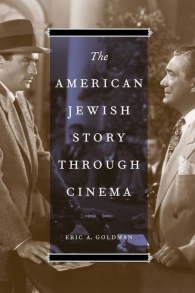The following was written in April 2010 for a projected volume on Stanley Kubrick that was being prepared at the time by the Chicago-based magazine Stop Smiling, who commissioned this and a few other pieces by me for it. For a variety of reasons, including the discontinuation of the magazine, the book has never appeared, and the editor, James Hughes, has kindly given me permission to post it here. — J.R.

The reasons given most often of why Stanley Kubrick collaborated in 1979 with this woman on the script for The Shining are confirmed by Johnson herself (in an essay about her eleven weeks of work with him, “Writing The Shining” — one of the best accounts of working with Kubrick that we have): her 1974 psychological novel The Shadow Knows, which he briefly considered adapting, and her expertise about Gothic fiction. To this one should add her sharp critical intelligence, apparent in both her fiction and her non-fiction. The latter ranges from her superb 1982 collection Terrorists and Novelists to her 1984 Life of Dashiell Hammett, and from her introductions to novels by the Bronte sisters, Stendhal, Wharton, and Voltaire to her canny 2005 guidebook Into a Paris Quartier. Read more
The following was written in April 2010 for a projected volume on Stanley Kubrick that was being prepared at the time by the Chicago-based magazine Stop Smiling, who commissioned this and a few other pieces by me for it. For a variety of reasons, including the discontinuation of the magazine, the book has never appeared, and the editor, James Hughes, has very kindly given me permission to post it here. —- J.R.

Shelley Winters performance as Lolita’s Charlotte Haze offers one of the best refutations of the notion that Kubrick was a misogynist who could depict women only as bitches like Marie Windsor in The Killing or as bimbos. (Maybe Christiane Kubrick in the last scene of Paths of Glory, then known as Susan Christian, is another counter-example, but unlike Charlotte, she hardly has time to register as a character.) Winters’ overbearing yet highly vulnerable culture vulture, who has to bear the full brunt of both Humbert Humbert’s patronizing and his private scorn, is portrayed with genuine warmth and sympathy — indeed, more of both than can be found in Nabokov’s novel or original screenplay.

This friend and one-time flat mate of Marilyn Monroe, whose stint with the Actors Studio preceded and probably encouraged her own, Winters (1920-2006), born Shirley Schrift, has suffered no less from the stigma of playing dumb blondes when Hollywood sexism was at its height, implanting the similarly false impression that she was as dumb and as unlettered as her characters. Read more
From The Forward, April 18, 2013. — J.R.

The American Jewish Story Through Cinema
By Eric A. Goldman
University of Texas Press, 264 pages, $55.
Eric A Goldman’s look at about a dozen Hollywood movies released between 1927 and 2009 can be recommended especially to readers who don’t flinch when they ponder his book’s title. For me, the very notion of postulating such a thing as “the” American Jewish Story — as opposed to, say, “an” American Jewish story (meaning any American Jewish story, of the author’s own choosing), or, better yet, multiple American Jewish stories — is already somewhat problematic. But in fact, Goldman is usually too thoughtful to be quite as categorical as his title threatens. Stories told in and by movies are basically what he’s thinking and talking about, and usually these are ones about American Jewish assimilation: characters stepping beyond ghetto and ethnic boundaries to contemplate such things as intermarriage and other forms of wider acceptance while repositioning historical memories and a sense of cultural identity.
I wish that the movies he picked for close examination, such as “The Young Lions,” “The Prince of Tides” and “Avalon,” were more engaging to me as art. I should admit that it was his book that finally induced me to catch up with the original, Al Jolson version of “The Jazz Singer” (at the age of 9 or so, I saw the 1952 Danny Thomas remake) and made me seek out Jerry Lewis’s strange 1959 made-for-TV version, with Molly Picon, no less, playing his mother.
Read more

